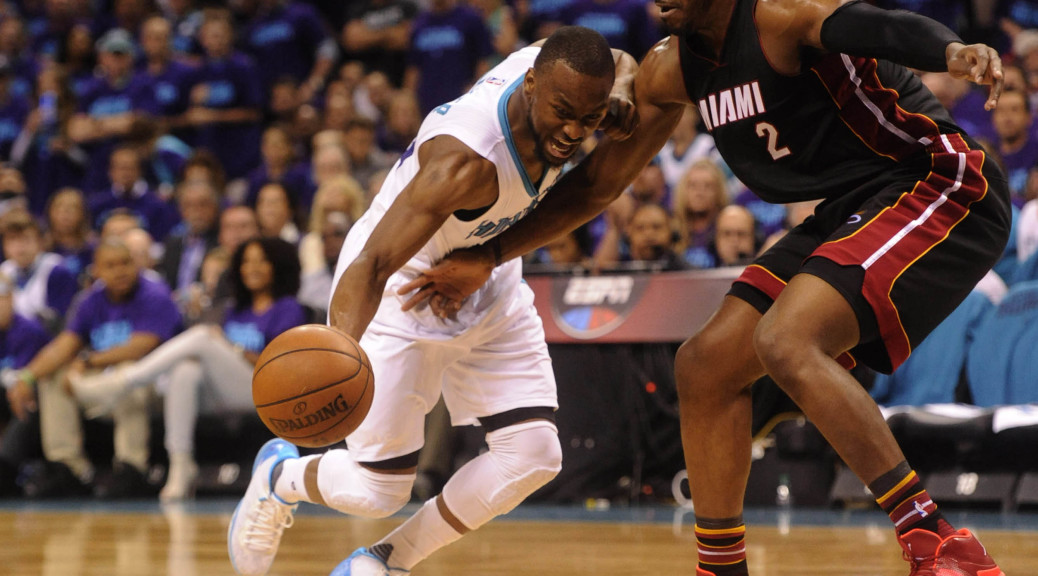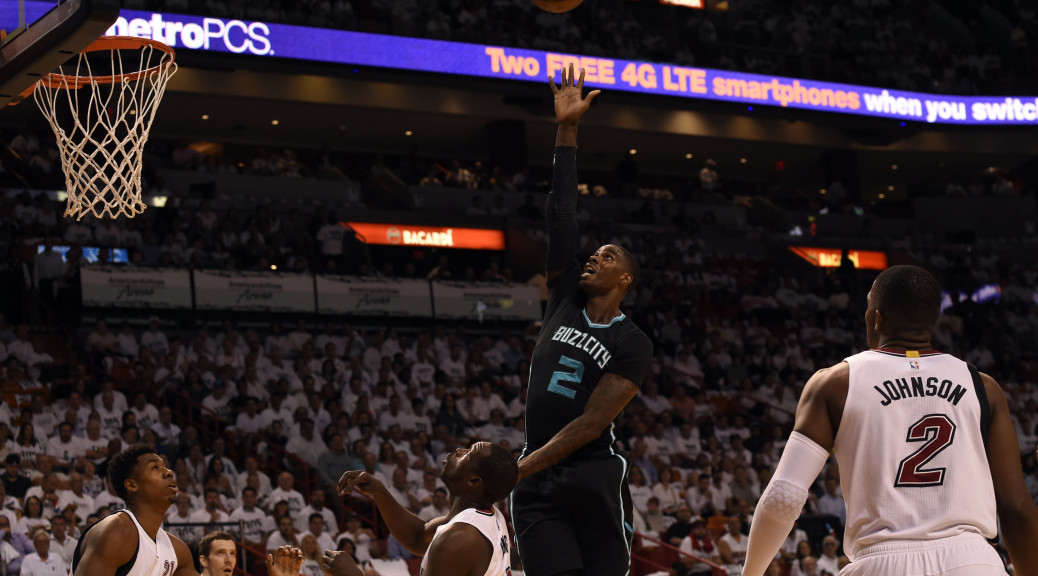On Friday night in Uptown, the Charlotte Hornets had the opportunity to knock the veteran Miami Heat out of the playoffs, which would have given the Bugs their first playoff series victory in 14 years, and set them up to play the winner of Toronto-Indiana — the Raptors are currently in the process of self-fulfilling a really sad prophecy.
Neither team played especially well — foul trouble and injuries have derailed this series from having some of its top performers involved in high-leverage situations (Nicolas Batum’s injury, Hassan Whiteside’s foul trouble).
Whiteside was unstoppable at time on Friday — 5 of 7 shooting, 4 demoralizing blocks, 111.7 points per 100 possessions — but Game 6 will be remembered as a classic Dwyane Wade takeover performance.
The Heat actually had a negative point differential with D-Wade on the court: according to NBA.com, Miami had a net differential of -1.9 points per 100 possessions with Wade on the floor. However, looking at isolated numbers like that doesn’t tell you much without context. Wade was obviously a monster in the fourth quarter; the Heat scored better than 1.1 points per possession with him on the court. He also buried three huge shots: two miraculous 3-pointers — his first connection from deep since last December — and a turnaround fading jumper with Courtney Lee, who has done a terrific job defensively, cloaked all over him — that turned out to be the dagger in Charlotte’s back, too.
If not for Wade’s absurd heroics, Kemba Walker would’ve stolen the show. It’s great having Nicolas Batum back in the lineup, but he’s clearly hampered with foot/ankle issues, and just isn’t the same player he’s been all season for Steve Clifford. He’s also questionable for Game 7 after playing less than 15 minutes in Game 6. Batum had some nice moments during game action, which was impressive considering that he was playing with a bad wheel and got basically no sleep following the birth of his child around 1 a.m. Friday morning (congrats, by the way, Nico!).
(Note: Batum was spotted warming up earlier this morning; he’s expected to play about the same amount today as he did on Friday.)
So just like old time, the burden is falling squarely Walker’s shoulders. Kemba’s a much improved player this season, and he was dynamic in Game 6, but with a gimpy Batum, and Jeremy Lin struggling and in foul trouble, way too much was asked of Walker. I was having flashbacks to the past two seasons; when Charlotte needed a bucket, it basically came down to, “Kemba, please go score.”
Oh my, did have ever score. Walker, who finished 14 of 30 from the field and drilled four 3-pointers, will never back down from a challenge. He relentlessly drove the ball, too. Check out his shot chart, courtesy of NBA.com — he had 17 attempts at the rim:
Walker produced big time, despite frequent attention from Miami’s menacing defensive duo: Justise Winslow and Josh Richardson — both long-limbed rookies bent on making life for Kemba miserable.
The former UConn Husky scored 14 of Charlotte’s 20 fourth quarter points, while playing all but one minute that period. Kemba, according to Basketball-Reference, had a usage rating of 44.4 percent in Game 6. This means nearly half of Charlotte possessions with Kemba on the floor (he played 39 minutes, mind you), resulted in a turnover, field goal attempt, or a foul drawn by Walker. That’s far too high; during the regular season, Kemba posted a career-high usage of 26.5 percent.
Charlotte’s lost at Time Warner Cable Arenas just 12 times all season — they blew their chance to end Miami’s campaign in North Carolina on Friday. Now, they’re down in South Beach for a closeout Game 7 early Sunday afternoon. If Walker’s going to receive help igniting the offense, it’ll likely have to come from reserve Jeremy Lin, who has played well for chunks of the postseason, but struggled in Game 6. Lin was only 1 for 8 from the field, with six of his eight points coming from the charity stripe. The Hornets scored just .85 points per possession with Lin on the court. His production, especially in the pick-and-roll, has to jump back up.
Get ready, folks. This should be a good one.













